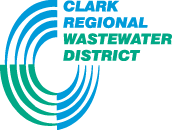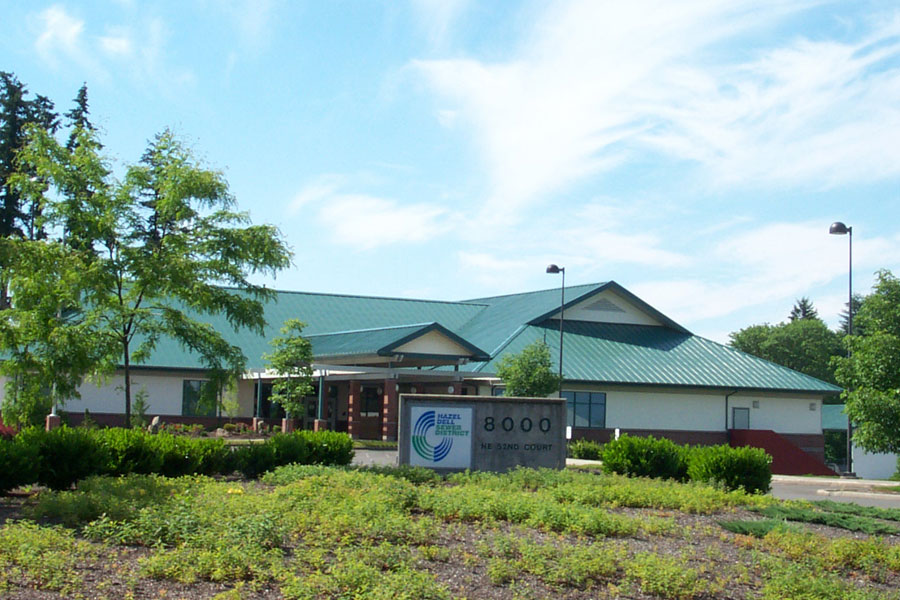Clark Regional Wastewater District forecasts 160% ROI on GIS-centric digital transformation


Region: Americas
Company Size: Medium Enterprise
Industry: Utilities / Wastewater Management
Function: Dispatch, Data Collection, GIS Mapping, Reporting, Dashboards, Automations
Background
Clark Regional Wastewater District (District) is one of the largest sewer service providers in the state of Washington, supplying environmentally responsible wastewater services to approximately 40,000 Equivalent Residential Units (ERU's) over an area of more than 47 square miles.
The District's Engineering Department maintains full Geographic Information System (GIS) service for the sanitary sewer services across the area. One of the primary services the Engineering Department provides includes field service technicians that perform on-site inspections for new system connections and new sewer infrastructure.
The District currently adds the equivalent of 1,800 new single family home connections to their infrastructure every year. They also have over 200 development projects ongoing in various states of review and construction, and 55 active capital projects.

The Challenge
Robin Krause, former District Engineer, summarized the challenge as "the need to accomplish more with the same number of staff, while doing it more effectively and with greater career satisfaction. The field staff knew they could be more effective with the right tools." Previously, when a construction project required a new or altered sewer connection, contractors would contact the District to request a site inspection by telephone or email on an ad-hoc basis. Once requests were received administrators would generate various paper forms to be picked up by an available inspector.
The ad hoc nature of the requests, coupled with human error when submitting an inspection request, meant that around 20% of the time there would be missing or incorrect information that would need to be verified before work could proceed.
"A good 20% of the time some information was wrong, so the inspector would have to call the contractor, find out what the real information was, and then go from there," said Tom Sedlacek, Senior Engineering Technician (GIS) for Clark Regional Wastewater District, and a major champion for developing solutions.
Inspections took place by recording test results and creating field sketches by hand with pen on scratch paper. After the inspection was carried out, the sketches brought back to the office and transferred again by hand to the inspection form. The forms were then returned to admin for scanning and processing. As inspections take place in all weathers, further data accuracy challenges occurred when transcribing data from documents that had been filled out in wet conditions, and correctly associating the sketch with the correct inspection.
With paper forms, there was no centralized database and information was stored in multiple systems. Emails and meetings were required to track the status of a given inspection or project, which was time-consuming and led to data duplication errors.

"One of our first tasks was to find a good field form app, we wanted to keep our systems as GIS centered as possible. Other Esri compatible solutions that were Excel based didn't really lend themselves to the dynamic data that we needed."
The Solution
Realizing that they were not taking full advantage of new technologies the District began working with their consultant FLO Analytics to analyze their requirements. Together they realized they had an opportunity to digitize the District’s inspection workflow and design better processes.
These new processes required the ability to tie mobile data collection apps directly to GIS software while ensuring field data remained tied to the asset throughout the inspection and review lifecycle. Another requirement was for better visibility into real-time data with a centralized database and dashboard reporting capabilities. After FLO Analytics conducted a thorough evaluation of the options available, Flowfinity was selected for being the most versatile platform.
"One of our first tasks was to find a good field form app, we wanted to keep our systems as GIS-centric as possible," said Sedlacek. "Other Esri compatible solutions that were Excel based didn't really lend themselves to the dynamic data that we needed. Flowfinity is SQL based and provides a much more dynamic central database."
Dispatch and Data Collection
With Flowfinity, field data collection apps have streamlined site inspection workflows significantly. Paper forms are no longer required as data collection is now digitized and performed using apps that guide an inspector through all required steps of an inspection. This has greatly reduced the per inspection time and human error.
Contractors and members of the public now primarily request permit inspections online, where all relevant data is collected and though system integration is instantly stored within Flowfinity. Staff can access permit requests and information on the map and launch an inspection record directly, and submitted data updates the map in real-time in the field and office, providing a single view of inspections. Automatic email notifications send copies of project inspections directly to contractors and other parties, improving communications and saving time.
"When we get a new permit in it goes directly into Flowfinity, it is matched to a GIS polygon and placed on our map, and once it's completed the polygon will be automatically removed from the map," said Sedlacek.
On-site photos are taken using an inspector's mobile device and are immediately stored in Flowfinity and annotated in the app, instantly highlighting special instructions or concerns while high precision GPS locations are taken with a commercial antenna. This means scanning and deciphering hand drawn field diagrams is a thing of the past.

"Flowfinity's SQL backend allowed us to develop innovative data integrations directly with the Enterprise GIS system that the District runs, allowing for easy map display and interactions."
GIS Mapping
FLO Analytics helped the District with coding integrations that allow the sharing of permit inspection data stored in Flowfinity with Esri ArcGIS mapping software. This means that vital GIS software and Flowfinity workflows are fully synchronized and data collected in the field is tied to GIS maps. A field inspector can identify the location of an asset location via a GIS map polygon, then launch an inspection in Flowfinity with a tap.
"Flowfinity's SQL backend allowed us to develop innovative data integrations directly with the Enterprise GIS system that the District runs, allowing for easy map display and interactions," said Grant Herbert, GIS Professional at FLO Analytics.
This integration not only ties two vital systems together in a way that improves user experience, but it also ensures that data integrity is maintained. There is no risk of duplicate inspections or erroneous GIS maps that slow reporting and analysis. The details of an inspection can be viewed in Flowfinity via records, or colored polygons on an area map in ArcGIS.
"I click the job icon on the map, and here's all the information that comes out of our finance software. From the map I click on 'Start Inspection' and it launches Flowfinity. It's just like magic every time I do this…" said Sedlacek.

"From the map I click on 'Start Inspection' and it launches Flowfinity. It's just like magic every time I do this…"
Tracking and Reporting
All field data collected is stored instantly in a centralized, dynamic database. If there is no internet connectivity on-site the data will be stored on the device and uploaded when a connection is available, providing reliable offline functionality when needed.
This combination of mobile data collection apps and centralized database provides real-time visibility across the organization. When an inspection is submitted from the field, it is instantly accessible for review by office-based admin staff. No more waiting for paper forms to return!
Daily reports are automatically generated and distributed summarizing the previous days' inspections, which can also be easily visualized in real-time on a digital map. This replaced the need for time consuming meetings and emails to track progress.
The Results
The District considers their digitization project a success as they enjoy significantly increased efficiency and time savings. In the first year 373 hours of labor were saved, primarily in data entry and record keeping, leading to a 60% project cost recovery. Having the ability to immediately access data and track permits has also dramatically decreased response times and resulted in improved customer service.
The department projects a 160% ROI within 5 years, while Tom and his colleagues continue to innovate new ways to streamline operational processes with Flowfinity that are not included in that calculation. Achieving ROI has taken less time than anticipated, and the verified time savings have been further bolstered by a variety of soft ROI factors such as less time spent in meetings.

"We project a 160% return on investment within 5 years."
The department is receiving wide support and positive, constructive input from engaged staff, leading to more apps being built to satisfy other process gaps. Flowfinity is proving to be a scalable solution as employees continue to analyze their workflows and ask, "can you build an app for that too?"
The accessibility of no-code app configuration lends itself well to an iterative approach to continual improvement of field data collection workflows and is allowing Tom Sedlacek, GIS Analyst and Flowfinity app builder, to tell end-users to "dream as big as you can."
Next Steps
The District hopes to leverage dashboard reporting, integrated with GIS, to drive field operations and business performance as the next phase of their Flowfinity app development journey. Future iterations may also incorporate more process automations utilizing software robots to achieve even greater efficiencies. Tom and his department will continue to take a modular approach to their systems and update specific pieces as new functionality is released.
FLO Analytics continues to work with the District and other clients in both the public and private sectors to leverage GIS and data analytics to innovate bold solutions that improve communities.
Flowfinity has plans to launch more integration and mapping features in the near future, in addition to IoT remote sensing functionality that should prove useful to municipalities, utilities and environmental engineering firms.